West Australians making waves here and overseas.
M. L. STEADMAN
THE SCREENING PROCESS
Once you've penned an international bestseller, the next step is the big-screen version. Steven Spielberg's DreamWorks Studios will be releasing the big-budget film adaptation of her debut novel in early 2016, but don't think reclusive author M. L. Steadman will be on the red carpet. The WA expat secured a "six-figure" sum for the US rights to The Light Between The Oceans, and famously interviewed nine publishers for its UK rights. Harry Potter producer David Heyman and Blue Valentine director Derek Cianfrance teamed up to produce the film, about a lighthouse keeper and his wife facing a moral dilemma when a boat containing a dead man and a baby washes onto an island off WA. There's no word yet on a follow-up from the now-London-based author, but be patient: Steadman said in a 2013 interview that she'd "have a go, and report back when it's done!".
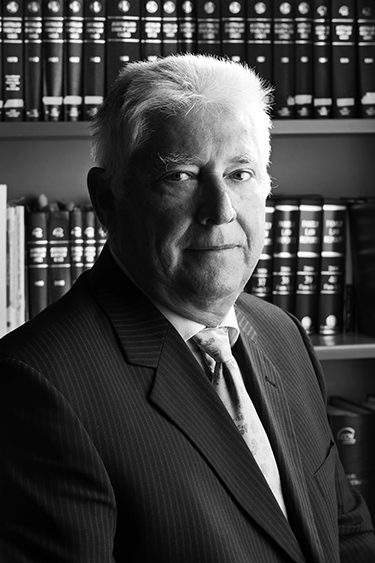 PETER DOWDING
PETER DOWDING
ONE FOR THE BOOKS
The former Premier, once toppled by his party while overseas, is delving into history of an entirely different kind.
Peter Dowding's challenge for this year is to start a book, documenting the life of his uncle Bruce, a translator executed in France during World War II.
After returning recently from a research trip to the Dordogne region of Northern France, he says there's nothing left to do but write – and the story is worth it. Bruce was working as an interpreter before the Germans caught him. Kept as a prisoner of war, he escaped, and worked with resistance fighters, before they were betrayed, arrested and executed. It's a hefty writing project that will keep the barrister busy for months to come.
Peter Dowding led the Labor party after the departure of its infamous leader Brian Burke, and these days takes select legal cases around other commitments. But the grit that saw him survive toppling by his party after an unlikely election win is ever-present. "I think they did some pretty disgraceful things, but then obviously
I would think that," Peter says wryly of the party's decision to dump him. "I was holding out for some tough outcomes, which some colleagues didn't share – they didn't have the bottle for the tough times. The Federal election was to be held in March of 1990, and they were worried about the WA numbers. Some of the Teflon members of the party got rid of me while I was overseas, so they could put in the first woman premier in Australia and give the poll a couple of percentage points." While he doesn't regret his decision to resign, he admits to feeling he hadn't been ruthless enough. "It might have been better to slaughter some opponents earlier."
His first foray into politics came after he was invited by WA's first Aboriginal parliamentarian, Ernie Bridge, to be his running mate in the 1983 election. Peter successfully represented Ernie in the Court of Disputed Returns to win back the seat the politician almost lost at the 1977 election. "The Liberal Party had a plan to deprive Aboriginal people of their votes in the Kimberley and the Pilbara, to prevent Ernie getting elected," Peter explains. "It was to trick illiterate Aboriginal people into casting invalid votes, or prevent them from voting at all. Ernie lost by 100 votes." After returning the seat to the politician, Peter became his friend, and after a gruelling 18-month campaign, Peter won the district of North Province. Though he excelled as a minister, Peter says he had no desire to be premier.
"I had significant reservations," he says of the premiership, which he accepted an awkward two months before Burke's retirement. He was on his own when facts came to light about the government's funding of "a very shonky bank called Rothwells", although he didn't know how shonky at the time. "When the global financial crisis hit, everyone was surprised that even the sharpest financial minds couldn't manage the big banks in Paris and New York. What chance did we have, managing a bank when, unbeknownst to us, the head honcho was a crook? I wrestled with that all through my time as premier."
These days, he's more zen. "It's a long time ago," he says, content to expend his energy procrastinating that book.
MINJEE LEE
DRIVE FOR SUCCESS
This WA golfer is set to be one of the world's top players.
"She's got more talent in her little finger than I ever did at 17," is the now-famous description of protégée Minjee, given by Australian golf legend Karrie Webb at the Women's Australian Open in 2014. Then 17, Perth-raised Minjee had caught global attention with back-to-back Australian Women's Amateur Championship wins, becoming the world's number-one ranked amateur, before turning pro the same year. Ritchie Smith – who has coached the star since she was an 11-year-old with a swing that was "all over the shop" – predicts she'll be a world top 10 player. But the international golf media is more excited than that – Minjee's been repeatedly touted as Australian golf's next big thing, with pundits labelling her Webb's successor. They may well be right: as Scoop went to print, Minjee was ranked 16th in the world to Webb's 19th, following the latter's shock early exit at August's British Open. Securing her maiden tour victory in May this year, Minjee is now looking ahead to the 2016 Rio Olympic Games.
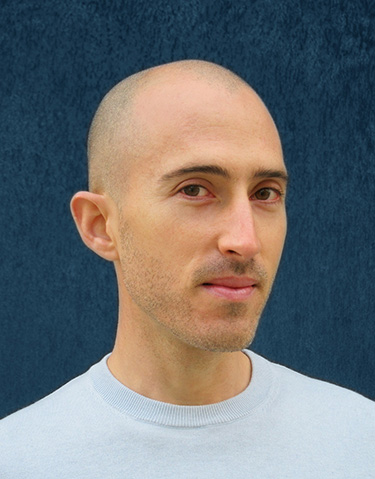 CHRISTIAN DE VIETRI
CHRISTIAN DE VIETRI
A LANDMARK DECISION
A local sculptor's latest work is certain to become one of the city's most talked-about sights. You'll love it or you'll hate it, but there'll be no escaping it – towering sculpture Spanda will be the first thing visitors to Elizabeth Quay see. Like most art, it will attract as much criticism as praise, but its creator, Christian de Vietri, isn't concerned. "I don't really mind what people think, it's not my position to tell them what to think," he says. "That's not to say I don't give due care and consideration to what I'm putting out, but combined with the intention and concept behind the work, it can be interpreted in any way anyone wants."
The piece, a representation of an individual's connection to a bigger whole, comprises six large oval shapes, layered to look like ripples. Costing $1.3 million, it will reach the height of an eight-storey building when it's installed in December. Despite its size and imposing presence, Christian won't let the grandeur go to his head. "I'm grateful that my skills can be put to use," says the internationally acclaimed sculptor who has spent a decade exhibiting in New York.
The Curtin University graduate already has a growing profile, thanks to his first piece of public art, Ascalon, the fluid white cloak created with artist Marcus Canning that takes pride of place in the grounds of St Georges Cathedral.
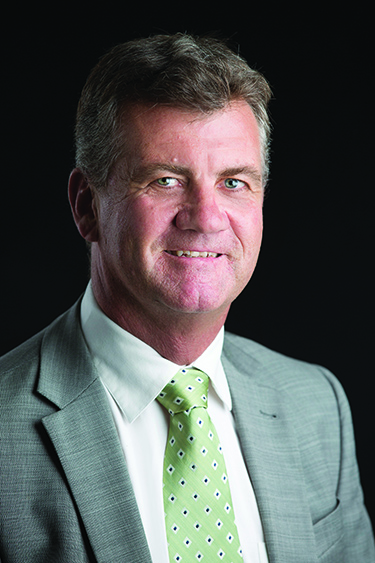 PETE GIBBONS
PETE GIBBONS
MATES RATE IT
Look out, Uber, there's a smart new player in the wings.
A post booze-up walk home in the wee hours wouldn't usually inspire an epiphany. But there's perhaps no other way to describe the light-bulb moment that sparked Pete Gibbons's genius business idea.
"After a work Christmas party in 2013, none of the taxis turned up," he recalls. "Hitching through the Western Suburbs on the way home, I thought to myself, 'I probably know half the people in these houses – what if there was an app just for mates, for pick ups and drop offs on nights like this?"
A mild hangover the next morning did nothing to diminish his growing excitement about that late-night musing, which seemed to present more possibilities the more he thought about it. What about school mums looking to offer or accept drop offs for sporting events, or during schoolies' week; or students needing a ride to notoriously difficult-to-park places like UWA? Or people in regional towns with that great sense of community but woeful public transport? Or cancer patients in need of a ride to chemotherapy? And what if the app diverted to Uber or other services if mates couldn't assist? All without putting friends and family 'on the spot'.
Eighteen months down the track, the 48-year-old property developer has worked with Adelaide developers to create the very app that he imagined – called Onya – and at the time of our interview was fielding a flood of beeps and pings on his mobile from testers across the country, days away from its official launch on the market. The Apple 'test flight' had gone without a hitch, apparently. He's also received $30,000 in funding from a major motoring body to undertake a pilot launch in the state's traffic-accident prone southwest region.
And the app is easy to use, even accommodating users' 'beer thumbs'. It will cost between $1 and $2 per ride and – down the track – will most likely include advertising tiles so users who feel bad about being driven around by their mates for such a measly sum can send them coupons for flowers, movie tickets or chocolate. It doesn't take much imagination to envisage a range of potential interested parties who could well make Pete an offer he can't refuse.
"My dream is to go to bed knowing that some drunk guy in Estonia will get home safely, and I'll earn $1 while I sleep," he says. "This is what gets me literally jumping out of bed in the morning."
It is clear that the creative journey has been a wild and exhilarating ride, starting as an initial 'indulgence' that appears to have turned Pete's world topsy-turvy, and now presenting opportunities that would have been unthinkable in his 'previous life' as a property-market mogul.
"I love the process of turning an idea into a product – I get to hang out with cool hipster coders and other people I never would have met otherwise. And, now that I have the experience behind me, I am getting people approaching me with ideas," he says.
Already, the business consumes more than half his working hours. And with a raft of obvious potential flow-on applications – including one that revealed itself during a post-interview discussion, about the building-tender process of all things – it seems clear that this is merely the start of much bigger things.
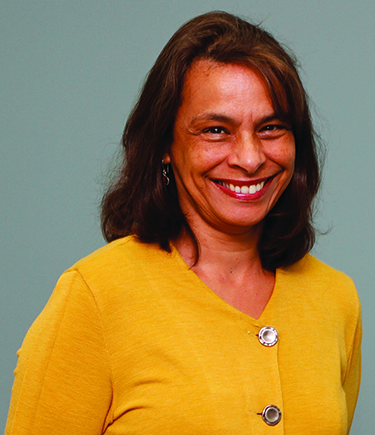 MARIA OSMAN
MARIA OSMAN
HUMAN RIGHTS DEFENDER
Leaving the boardroom behind for a role with the UN. Working with those on the front line in the struggle against female genital mutilation (FGM), Maria is intent on making more men
and boys into allies in the fight. A lifelong activist for gender equality and human
rights, she recently changed career direction after 40 years in senior executive roles, to work hands-on with communities affected by violence, abuse and stigmatisation.
She was among just a handful of Australians appointed to attend a session of the United Nations Commission on the Status of Women in New York earlier this year.
The issues close to her heart are as serious as they come, but she laughs gently when recounting her observation that many countries at the event – which reviewed 20 years of progress in gender equality since the implementation of the Beijing Platform for Action, a global blueprint for gender equality – sent male delegates.
Maria had stepped down from a senior executive role in the Department of Local Government and Communities to go back into grassroots work when she was appointed to the UN role. After meeting delegates from Somaliland while she was in New York, she now plans to do more for young and migrant women on leadership issues in the Somaliland community, fundraising in Australia for an FGM charity in the African state.
"The inspirational women from the Network Against FGM in Hargesia are at the front line of FGM eradication," she says of the practice, which the World Health Organisation estimates has been performed on up to 140 million women worldwide. "Somaliland has a zero tolerance of FGM, and the funds raised at events around Australia will go towards supporting rural poor women and girls to have the necessary medical procedures to correct FGM, and also provide community education and training." Maria says she was proud of Australia's all-female delegation, adding that, as one of only three countries in the world with
an ambassador for women, Australia demonstrates that it values women and girls.
Though proud of Australia's international reputation for gender equality, she says we need to use our privileged position to create systemic change to structures that enable inequality. "We've had immense change in global laws and policies, but what hasn't changed, and what we saw very strongly at the UN, is attitudes to women. The most powerful message that came from the UN, which reaffirmed my life journey to some extent, was the overwhelming violence towards women and girls worldwide, and the need to have men and boys as allies in that fight."
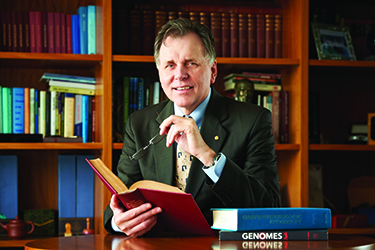 BARRY MARSHALL
BARRY MARSHALL
GUT FEELING
Could stomach ulcers hold the key to improved quality of life for kids?
It was his research into the bacterium Helicobacter pylori that led to Barry Marshall winning a Nobel Prize with colleague Robin Warren in 2005. Now, the WA scientist is engaged in further studies that may indicate that same bacterium could rebalance asthma and allergy rates.
"It appears if you have Helicobacter in your system, you're less likely to be allergic to things, and your kids are less likely to get allergies or asthma," says Barry. "If you give this kind of thing to very young animals, as their immune systems are developing, it switches to a more benign mode and they don't grow up with allergies. In theory, it's a great thing to fine-tune the allergic response when they're very young, so when they're five, they're not going to be having asthma. We're looking at it to create some kind of a product – like a probiotic."
Barry estimates about 20 per cent of Australian primary school kids have some kind of issue with asthma, and says that never used to be the case. Though trials of the product will start on adults in Perth in 18 months, Barry says bureaucracy and conservatism are stagnating the kind of research that saw him claim the Nobel – WA's only one – because researchers are reluctant to pursue clinical trials. "The start-up time to get the first patient into a clinical study is probably 10 times more than it used to be," he says. "It seems to me that in WA hospitals, where people have a track record of qualifications and trust, that it should be easy to get things going. But if you connect it up with the giant state health bureaucracy too much, it slows everything down."
When he and Robin were conducting their research into stomach ulcers, they weren't trying to discover a cure – they were simply curious. "The message in that is the best kind of research to make breakthroughs is curiosity-driven research. And it's quite ok for that research to be different, not necessarily following the party line, using new observations and technology."